Filter by

Optimal Operation of Batch Membrane Processes
This study concentrates on a general optimization of a particular class of membrane separation processes: those involving batch diafiltration. Existing practices are explained and operational improvements based on optimal control theory are suggested. The first part of the book introduces the theory of membrane processes, optimal control and dynamic optimization. Separation problems are defined…
- Edition
- 1
- ISBN/ISSN
- 978-3-319-20474-1
- Collation
- XXV, 158
- Series Title
- Advances in Industrial Control
- Call Number
- -

Evolution of Lightweight Structures Analyses and Technical Applications
This volume contains studies on the evolution and function of lightweight constructions of planktonic and other organisms, and examples of how they can be used to create new solutions for radical innovations of lightweight constructions for technological application. The principles and underlying processes responsible for evolution and biodiversity of marine plankton organisms are highly releva…
- Edition
- -
- ISBN/ISSN
- 978-94-017-9398-8
- Collation
- 39 b/w illustrations, 82 illustrations in colour
- Series Title
- -
- Call Number
- -
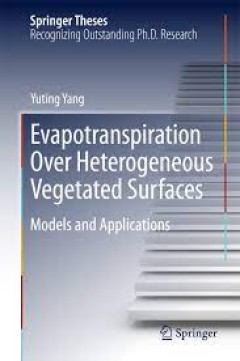
Evapotranspiration Over Heterogeneous Vegetated Surfaces Models and Applicat…
The focus of this work is the development of models to estimate evapotranspiration (ET), investigating the partitioning between soil evaporation and plant transpiration at field and regional scales, and calculating ET over heterogeneous vegetated surfaces. Different algorithms with varying complexities as well as spatial and temporal resolutions are developed to estimate evapotranspiration from…
- Edition
- -
- ISBN/ISSN
- 978-3-662-46173-0
- Collation
- 29 b/w illustrations, 36 illustrations in colour
- Series Title
- -
- Call Number
- -

Micro Irrigation Systems in India
This book takes stock of micro irrigation systems (MIS), the technological intervention in India’s agricultural and water management sectors, over the past couple of decades. Based on empirical research from the major agriculturally dynamic states, viz., Gujarat, Rajasthan, Maharashtra, Tamil Nadu, Andhra Pradesh and Karnataka, the book provides a nuanced understanding and objective assessmen…
- Edition
- 1
- ISBN/ISSN
- 978-981-10-0346-2
- Collation
- XIV, 178
- Series Title
- India Studies in Business and Economics
- Call Number
- -
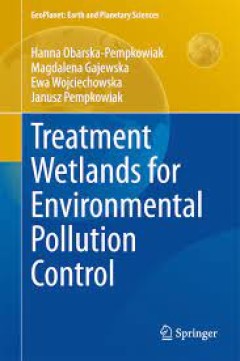
Treatment Wetlands for Environmental Pollution Control
The aim of this book is to present an overview of the state of the art with regard to the function, application and design of TWSs in order to better protect surface water from contamination. Accordingly, it also presents applications of constructed wetlands with regard to climatic and cultural aspects. The use of artificial and natural treatment wetland systems (TWSs) for wastewater treatment…
- Edition
- 1
- ISBN/ISSN
- 978-3-319-13793-3
- Collation
- XIII, 169
- Series Title
- GeoPlanet: Earth and Planetary Sciences
- Call Number
- -
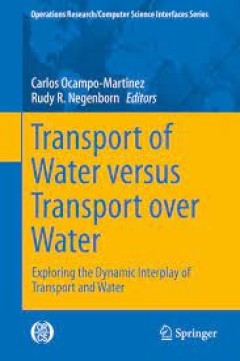
Transport of Water versus Transport over Water
This book aims at stimulating discussion between researchers working on state of the art approaches for operational control and design of transport of water on the one hand and researchers working on state of the art approaches for transport over water on the other hand. The main contribution of the book as a whole is to present novel perspectives ultimately leading to the management of an envi…
- Edition
- 1
- ISBN/ISSN
- 978-3-319-16133-4
- Collation
- XVI, 478
- Series Title
- Operations Research/Computer Science Interfaces Series
- Call Number
- -
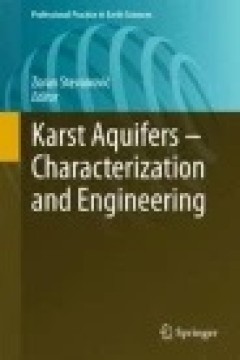
Karst Aquifers - Characterization and Engineering
This practical training guidebook makes an important contribution to karst hydrogeology. It presents supporting material for academic courses worldwide that include this and similar topics. It is an excellent sourcebook for students and other attendees of the International Karst School: Characterization and Engineering of Karst Aquifers, which opened in Trebinje, Bosnia & Herzegovina in 2014 an…
- Edition
- -
- ISBN/ISSN
- 978-3-319-12850-4
- Collation
- -
- Series Title
- -
- Call Number
- -
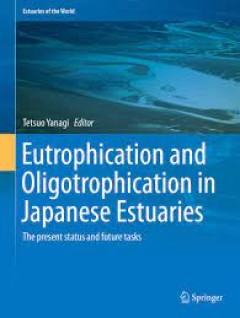
Eutrophication and Oligotrophication in Japanese Estuaries The present statu…
This book presents lessons learnt from Japan’s past, in relation to coastal waters, industrial pollutants and concentrated urban populations. It examines ecosystem damage and pollution in coastal sea areas and addresses the question: What is the present status of Japanese estuaries from the view point of eutrophication and oligotrophication? The authors describe three typical situations, name…
- Edition
- -
- ISBN/ISSN
- 978-94-017-9915-7
- Collation
- 17 b/w illustrations, 140 illustrations in colour
- Series Title
- -
- Call Number
- -
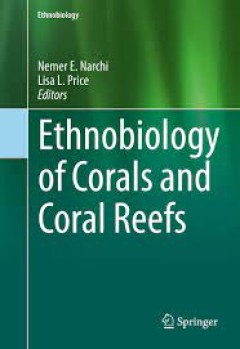
Ethnobiology of Corals and Coral Reefs
This book explores the ethnobiology of corals by examining the various ways in which humans, past and present, have exploited and taken care of coral and coralline habitats. This book will bring the educated general audience closer to corals by exploring the various circumstances of human-coral coexistence by providing scientifically sound and jargon-free perspectives and experiences from acro…
- Edition
- -
- ISBN/ISSN
- 978-3-319-23763-3
- Collation
- 13 b/w illustrations, 60 illustrations in colour
- Series Title
- -
- Call Number
- -
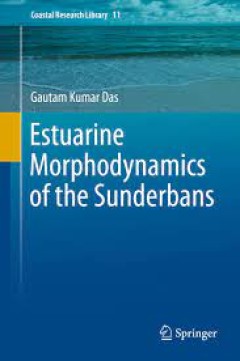
Estuarine Morphodynamics of the Sunderbans
This book is the outcome of rigorous and continuous research work done by the author over about three decades on the open ecosystem and dynamic environment of the estuarine Sunderbans. The objective of this work is to identify the field and factors changing gradually upon this active delta over the years, decades and centuries. The deltaic Sunderbans yet not mature enough, has been changing in …
- Edition
- -
- ISBN/ISSN
- 978-3-319-11343-2
- Collation
- 26 b/w illustrations, 33 illustrations in colour
- Series Title
- -
- Call Number
- -
 Computer Science, Information & General Works
Computer Science, Information & General Works  Philosophy & Psychology
Philosophy & Psychology  Religion
Religion  Social Sciences
Social Sciences  Language
Language  Pure Science
Pure Science  Applied Sciences
Applied Sciences  Art & Recreation
Art & Recreation  Literature
Literature  History & Geography
History & Geography